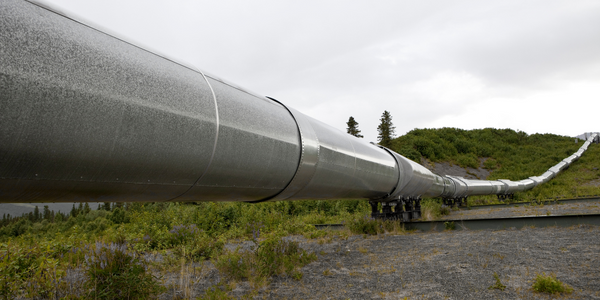FMC Technologies: Evaluating Cumulative Damage in Subsea Oil and Gas Equipment with ANSYS Mechanical and Scripting

Technology Category
- Sensors - Gas Sensors
- Sensors - Utility Meters
Applicable Industries
- Equipment & Machinery
- Oil & Gas
Applicable Functions
- Product Research & Development
Use Cases
- Structural Health Monitoring
About The Customer
FMC Technologies is a global market leader in subsea systems and a leading provider of technologies and services to the oil and gas industry. They help Exploration and Production customers overcome difficult challenges with onshore and offshore drilling, completion and production technologies and services to improve their returns. The company is known for its innovative solutions in the face of complex challenges, particularly in the design and manufacture of subsea oil and gas equipment. Their commitment to value engineering and reducing over-engineering is evident in their approach to problem-solving.
The Challenge
FMC Technologies India Pvt. Ltd. was faced with the challenge of designing subsea oil and gas equipment that could withstand high pressure and high temperature domains. The equipment had to be qualified per ASME BPVC VIII, Division 3, which requires the cumulative damage on the equipment to be below 1. The increasing depth of oil extraction meant that the structural loading requirements for subsea components were increasing, but there were also space and weight constraints on these components. To reduce over-engineering and promote value engineering, engineers needed to visualize damage distribution in each component. However, ANSYS Structural, the technology they were using, did not have a method to plot damage. The challenge was to develop a customized method using ANSYS’ scripting capabilities.
The Solution
FMC Technologies used ANSYS Mechanical or Workbench to determine loading conditions experienced by the product using Finite Element Analysis (FEA). They developed ANSYS Mechanical macros to evaluate cumulative damage as per ASME BPVC VIII Division 3, Article KD 232.1. ANSYS Parametric Design Language was used to customize the analysis to provide for damage visualization. The Macro code wrote an additional .RST file containing the elemental nodal value of ASME’s damage value for each node. The effects of the damage value on the components were evaluated. If any improvement in product performance was required, engineers made informed decisions based on the damage information in the .RST file. ANSYS post-processing tools were used to plot damage and identify areas in the design that did not satisfy ASME Sec. VIII D3 criteria.
Operational Impact

Case Study missing?
Start adding your own!
Register with your work email and create a new case study profile for your business.
Related Case Studies.

Case Study
Smart Water Filtration Systems
Before working with Ayla Networks, Ozner was already using cloud connectivity to identify and solve water-filtration system malfunctions as well as to monitor filter cartridges for replacements.But, in June 2015, Ozner executives talked with Ayla about how the company might further improve its water systems with IoT technology. They liked what they heard from Ayla, but the executives needed to be sure that Ayla’s Agile IoT Platform provided the security and reliability Ozner required.

Case Study
IoT enabled Fleet Management with MindSphere
In view of growing competition, Gämmerler had a strong need to remain competitive via process optimization, reliability and gentle handling of printed products, even at highest press speeds. In addition, a digitalization initiative also included developing a key differentiation via data-driven services offers.

Case Study
Taking Oil and Gas Exploration to the Next Level
DownUnder GeoSolutions (DUG) wanted to increase computing performance by 5 to 10 times to improve seismic processing. The solution must build on current architecture software investments without sacrificing existing software and scale computing without scaling IT infrastructure costs.

Case Study
Predictive Maintenance for Industrial Chillers
For global leaders in the industrial chiller manufacturing, reliability of the entire production process is of the utmost importance. Chillers are refrigeration systems that produce ice water to provide cooling for a process or industrial application. One of those leaders sought a way to respond to asset performance issues, even before they occur. The intelligence to guarantee maximum reliability of cooling devices is embedded (pre-alarming). A pre-alarming phase means that the cooling device still works, but symptoms may appear, telling manufacturers that a failure is likely to occur in the near future. Chillers who are not internet connected at that moment, provide little insight in this pre-alarming phase.

Case Study
Premium Appliance Producer Innovates with Internet of Everything
Sub-Zero faced the largest product launch in the company’s history:It wanted to launch 60 new products as scheduled while simultaneously opening a new “greenfield” production facility, yet still adhering to stringent quality requirements and manage issues from new supply-chain partners. A the same time, it wanted to increase staff productivity time and collaboration while reducing travel and costs.







